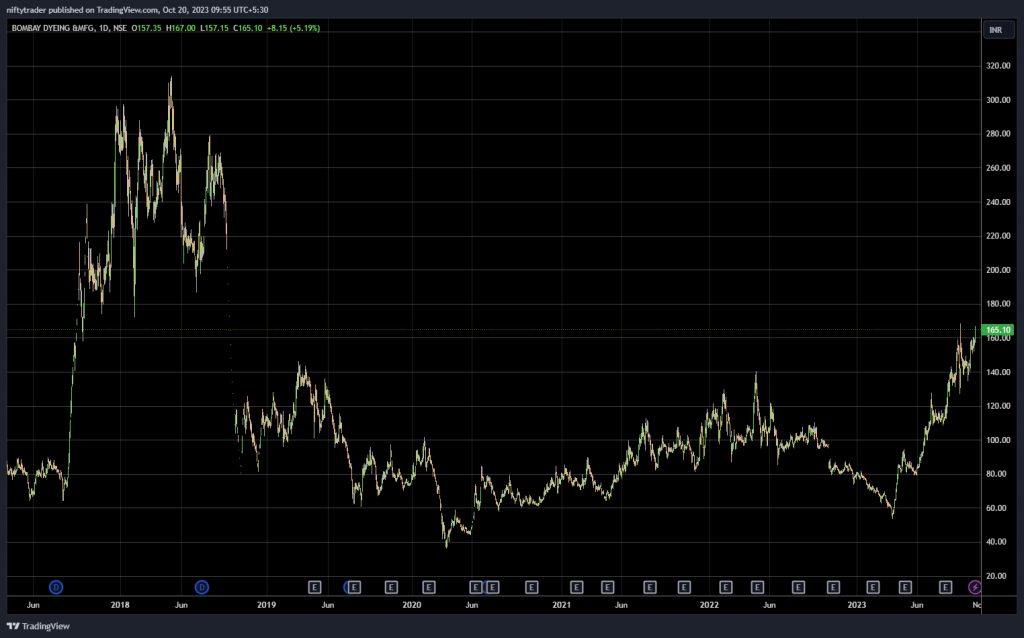Understanding Stock Market Psychology: The Relevance of Price
Investing in the stock market can be a rollercoaster ride, with its ups and downs often dictated by market psychology. One such example is the case of Bombay Dyeing, a recent event that highlights the importance of understanding the relevance of price in the market and the impact it can have on investor decisions.
Bombay Dyeing, a renowned company, recently monetized its land holdings. This land had been available for purchase for several decades. However, it wasn’t until the fourth quarter of 2017 that the news of land monetization broke. This announcement led to a spike in the company’s stock price, soaring from Rs80 to nearly Rs300. This sudden surge enticed many investors, particularly small-cap investors, to accumulate the stock within the range of Rs200 to Rs300.
Unfortunately, the anticipated deals did not materialise at that time, leading to a collapse in the stock price. The stock remained stagnant around Rs100 for four long years, inflicting agonising pain on investors who had bought shares at the peak. But now, the stock has started to rise once again.

The interesting aspect of this situation lies in the psychology of investors who are still stuck at the higher price levels. As the stock starts to climb, these investors face a dilemma. They have become resistant to selling their shares at a loss or near their average purchase price. This behaviour is driven by the concept of anchoring, where investors attach and fixate on the initial purchase price. They believe that the stock price should rise back to that level before they consider selling.
However, the reality is that the price an investor paid for a stock has no relevance to its current market value. The market does not owe investors any price movement based on their initial purchase price. The stock’s current price is what matters, and decisions should be made based on that reality.
Investors often fall prey to the psychological trap of assigning a “right” or “wrong” label to the price at which they bought a stock. They believe that their purchase price was the correct one, and any deviation from that price is a mistake. This mindset can be detrimental to making informed investment decisions.
Try to focus on Price Action !
To overcome this psychological bias, it is crucial to focus on price action rather than previous purchase prices or anchoring biases. Price action refers to the current behaviour of a stock’s price, considering its movement and trends. By understanding price action, investors can make more objective decisions and avoid unnecessary harm to their investments.
The key is to detach from a specific price point and instead evaluate the current price’s attractiveness. What an investor bought a stock at may have been the right price in a different context, but it may not hold true in the present. By shifting the focus to the present price, investors can train their minds to be more flexible and adaptive to market conditions.
In the case of Bombay Dyeing, investors who have held onto their shares since the peak may feel a strong attachment to their initial purchase price. However, if they observe the current price action objectively, they may find it more logical to sell and cut their losses rather than waiting for the stock to return to their original purchase price.
Adopting a price-focused approach encourages investors to stay informed, evaluate the market conditions, and adjust their strategies accordingly. This mindset allows investors to make decisions based on the present reality, rather than holding onto outdated notions of what is right or wrong.

If you have any questions, please write to support@weekendinvesting.com









